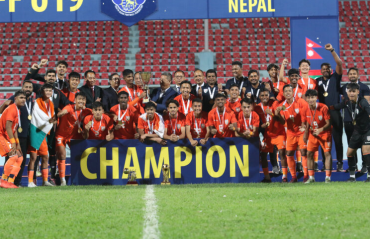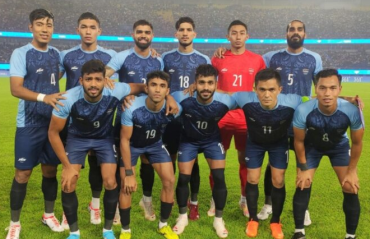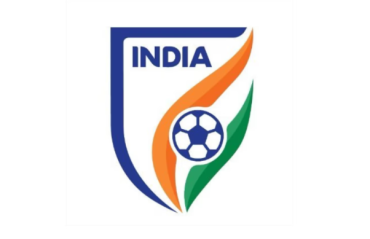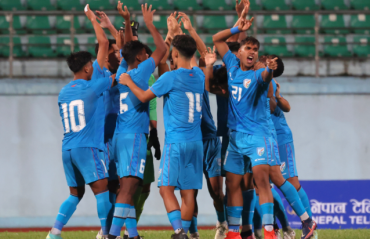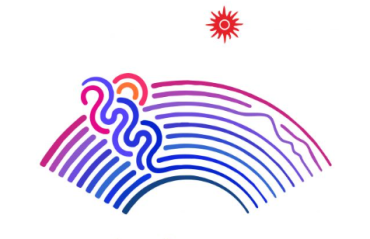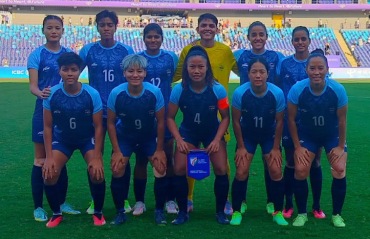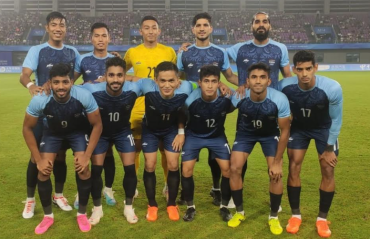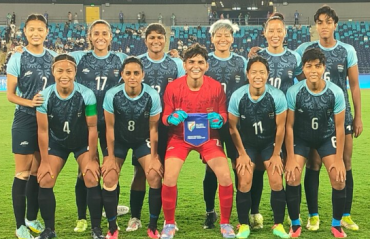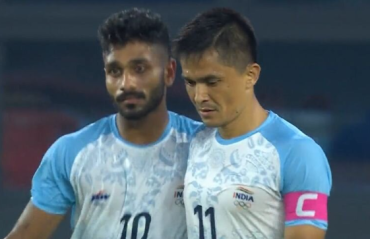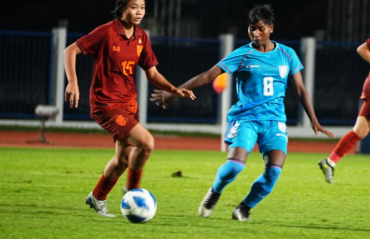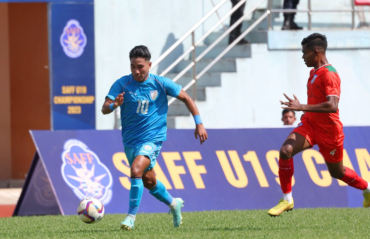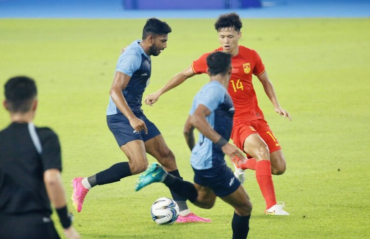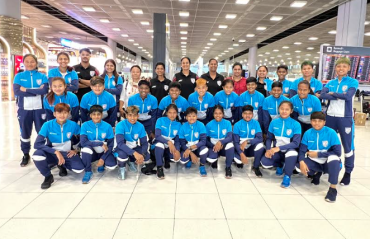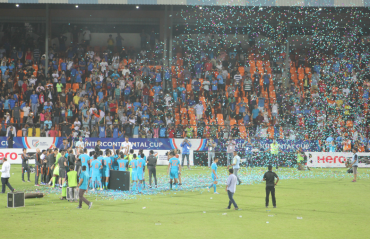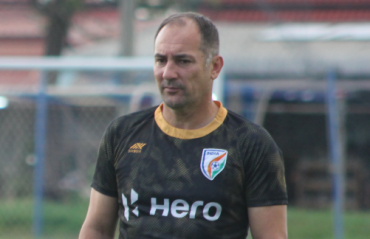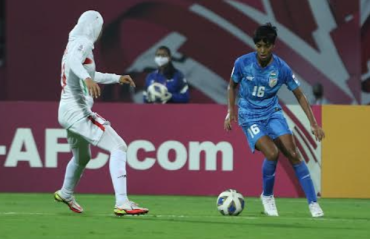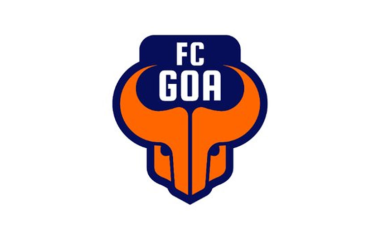SUNBURNT TERRACE -- The new roadmap can be a road to healing for Indian football
- By Chiranjit Ojha

- October 17, 2019

ABOUT THREE YEARS AGO, during a discussion about Indian football over a cup of tea, an official working for a 2nd Division League club suddenly seemed to lose his otherwise calm demeanour.
"What are you talking about," he said curtly. "The store is burnt to ashes and you're ticking an inventory list."
The topic that evoked the response was an assertion about the importance of keeping the Indian league system open with promotion-relegation across all divisions.
"I-League is top division now but no one knows if it will be around tomorrow," he elaborated. "It's obvious AIFF wants to phase it out and make ISL the top league and it doesn't have promotion-relegation. So we are already in a closed league system, just not on paper."
On closer inspection it made perfect sense. The way I-League and 2nd Division League clubs were slowly edging towards decline was exactly how lower league clubs fare when an open system is closed down. In any league system it's the top flight that gets all the attention and resources, and without a direct pathway of reaching it, lower league clubs run out of steam and either shut down outright or drastically cut down costs, trading competitiveness for survival.
Less clubs lead to less opportunities for players, leading to overall lower wages for most, except a few star names. The low budget clubs who rely on local talent to compete with the big guns no longer feel incentivised to develop their supply lines, which threatens to stagnate grassroots and youth development efforts. As the base of the league pyramid grows weaker, so does the whole structure.
This was the path Indian football looked set to choose when AIFF and FSDL presented their first roadmap back in 2016. That roadmap spoke of discontinuing I-League and 2nd Division League (which we later learned was decided back in 2010) and establishing ISL as the top flight, with no promotion-relegation.
For any club that was outside the ISL fold, this was akin to a death-knell. And over the next 3 years this became the basis of an ugly, multi-front spat between I-League clubs and AIFF/FSDL that led to tournament boycotts and threats of litigation.
In 2017, AFC and FIFA sent a delegation to India to figure out a solution to this mess. The report, however, didn't appear to be favoured by AIFF who never publicly released it; despite the whole thing being leaked by TFG last year. The report agreed to many of the principal proposals made in the 2016 AIFF/FSDL roadmap with one major difference: it set a definitive timeline for implementing in promotion-relegation in the new league structure.
Without the express endorsement from AIFF, the report did little to quash the boiling tensions between the clubs and the federation and the unrest carried on for another whole year until a meeting in Kuala Lumpur this week provided the first ever real break-through to the problem since ISL's inception in 2014.
AFC officials presided over a meeting where a new roadmap was unveiled in front of representatives from I-League and ISL clubs. The gist of this roadmap was drawn from both the 2016 roadmap and the AFC/FIFA report.
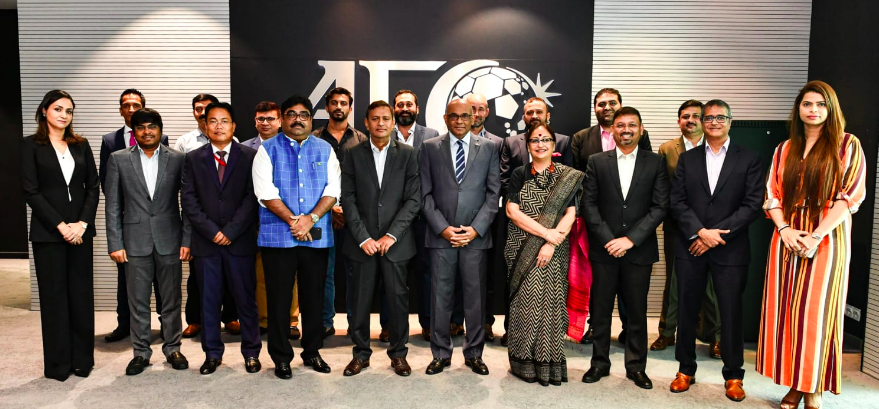
FSDL got approval for ISL to be the top league of India with a slot into the AFC Champions League Qualifiers. I-League got reduced to the stature of second tier and it was confirmed that it would be phased out in 5 years. It did, however, get a slot into the AFC Cup Qualifiers for now; something that second-tier leagues don't get (AFC said it was a "special compensation", but didn't specify if I-League will be officially classified as a cup tournament to facilitate that - as was the case with ISL from 2017 to 2019 - or whether it will be registered as the second tier on the books).
But the most important part of that roadmap was the re-introduction of an open league system. It said that the winner of I-League would be promoted to ISL from 2022-23 season without having to pay franchise fee and there would be promotion-relegation between ISL and the newly established lower leagues (likely to be named League One and League Two as suggested in the old 2016 roadmap) from 2024-25 onwards.
All of a sudden there's no more talks of suing or boycotting. And while not fully satisfied with it, even the harshest critics of AIFF and FSDL have decided to call a truce for now.
The significance of this change of stance doesn't come into grasp at first glance. But a deep look at it provides a broader picture of the bigger details and implications of this new roadmap and the changes it can bring to the Indian football landscape.
Firstly, it has to be understood that the I-League clubs are undergoing something that's excruciatingly difficult for any club to accept: a forceful relegation to the second tier. And not just that, the 2nd Division League clubs are also being downgraded from second tier to third tier. Relegation is always painful for any competitive club, and even worse when it comes undeserved; not because they performed badly but because somebody put a large price tag on playing in the top flight. Relegation causes clubs to lose sponsors and players, their ticket sales also go down. That's why in European leagues clubs that get relegated get a parachute payment to help them navigate the financial hardship that's coming their way.
So what prompts a whole division of clubs to agree to it? It couldn't have been an easy decision given that this is the very thing they have been fighting against all this time and under normal circumstances, no club that has poured blood and sweat into establishing themselves as a top tier club would just give it away. They held onto it while I-League fixtures were routinely not revealed until the last minute and regular TV broadcast remained an issue, robbing them of any opportunity to secure good sponsors. Originally AIFF tried to deal with them with a heavy hand but as it turned out, all that was needed was an assurance of fair treatment in the future. The rebel clubs had enough pragmatism to realise that an immediate merger of I-League and ISL, while an ethical stance to take when speaking in favour of an open league system, was not going to happen given how conservative ISL has been while adopting changes. In the current circumstances, this was as good a deal as they were going to get.
And also the fact that, as the aforementioned 2nd Division club official pointed out; they had practically already been relegated, this was just making it official.
There was never any doubt that between I-League and ISL, the latter was the better managed competition, with a great marketing arm, high-quality broadcast and the blessing of AIFF. The only aspect of it that drew criticism was that it shut the doors on those who could not pay its sky-high franchise fee (And policies like having a high number of foreign players, the one-city-one-club rule that expired after the 2018-19 season etc).
Once those are out of the way, ISL turns into a different animal altogether.
If you turn the clock back 13 years to 2006, when the National Football League was about to be re-branded I-League, the buzz around the Indian football circuit centred on a few simple points -
1) The new league must be well-organized, well-promoted and have a regular high quality broadcast at a suitable time slot
2) The league should have regulations that encourage more professionalism in clubs, like timely pay and a transparent transfer system
3) There should be a mandatory emphasis on grassroots and youth development
When the club licensing system was implemented with the birth of I-League in 2007, the clubs gradually raised their investment in youth development and grassroots. It was partly the reason why clubs like Shillong Lajong, Royal Wahingdoh, Rangdajied FC, Aizawl FC, Real Kashmir FC and NEROCA managed to win their way to the top flight from second division. It also paved the way for the exemplary youth development systems that Pune FC and Bengaluru FC built up. The establishment of AIFF Disciplinary Committee and Player Status Committee provided some checks and balances to ensure some professionalism and transparency.
However, the first and arguably the most important point was not handled well. But ISL, since its inception, had those things covered.
So if ISL throws its door open for clubs to qualify through merit, it becomes everything that clubs, stakeholders and fans wanted from their top flight league for the last two decades.
Well-executed league level marketing, releasing fixtures months in advance, guaranteed telecast on prime time; all these ensure that clubs gain good sponsorships. Which means, once promotion to the league can be had by winning I-League/League One, the same small budget clubs that had been considering shutting down because they saw no opportunities for themselves in the future, will focus on the game with renewed vigour.
Othes like Shillong Lajong, who decided to cut down their first team budget and practically volunteered for relegation to save money because they knew I-League was on its way out, will return to their competitive roots. Clubs like Aizawl FC, Gokulam Kerala FC, Minerva Punjab FC, Real Kashmir FC that have had success in I-League with smaller budgets, will think about investing more in developing talent and making their first team stronger so when the door to ISL opens up they can be ready.
But even more than the clubs that will be saved from decline, this will lead to the birth of new clubs. A lot of people have been on the fence about starting a new club because of the volatile Indian football landscape. They now have a reason to enter the fray. A number of clubs who have been active in local leagues but stayed away from the national competitions to save money, will now seriously consider stepping up.
And all these new clubs, new investment, new competitive spirit will go into 2nd Division League/League Two. The lower divisions will become more competitive than they have ever been. And since the league has a group stage - final round format, it can grow exponentially to include dozens of new clubs into the various regional conferences.
A closed-down ISL was sucking the life out of the lower divisions. An ISL with promotion-relegation will breathe new life into them. And the stronger the lower division gets, the upper divisions will get progressively tougher as clubs are forced to step up their game in order to maintain their place in the face of cut-throat competition.
A 16-club ISL, 20-club League One and 50-club League Two all connected by promotion-relegation will give India one of the most robust and competitive league systems in Asia. There will be more opportunities for players and coaches. The national team will have a much larger pool of players to choose from, leading to higher competition among players to wear the Blue and a better quality national roster.
Basically, when you incentivize the ambitions of the clubs at the base of the pyramid, they get more competitive and it trickles up to the top flight and the whole league pyramid gets stronger.
It's this promise of this future in which everyone gets a chance to participate that has made this roadmap a real solution; unlike the one suggested in 2016.
But this raises the question - why didn't AIFF and FSDL announce this back in 2016 itself? Why were they averse to the idea of promotion-relegation then and why did they agree to it now?
The involvement of AFC and FIFA likely made a difference but it probalby wasn't the only reason.
In 2016, when ISL still was a private tournament of 2 and a half months where franchises didn't have to fulfill the club licensing criteria, make real investments in youth development and take care of players for the whole season. The tournament also had a novelty factor, an exclusive window in the best months of the season (October to December) and the teams weren't seen as rivals of the I-League clubs; so they got the undivided attention of fans across the country.
A lot of that changed in 2017 when ISL started running in parallel to I-League. Teams like Delhi Dynamos, FC Pune City and ATK failed to hold the attention of fans. And due to no relegation, whenever a team started the competition badly and fell out of the top four race, they would just go through the motions for the rest of the season; a period of coasting that could last 2-3 months, causing fans to lose further interest.
All this put ISL in the same position as Australia's A-League, which also doesn't have relegation; halfway into the season, a number of matches became completely insignificant in the race to semi-finals. And since ISL didn't have any trophy for the team finishing top of the table in the league stage, the teams at the top also began to coast once their place in the top four was more or less secured.
Stadium attendance dropped drastically for most teams. The TV ratings were also affected.
At the same time, I-League's attendance was getting better every season and almost caught up with ISL's; despite negligible marketing budget and non-primetime matches. The simple reason was whenever I-League got new clubs from places like Mizoram, Manipur, Kashmir etc, an entire new state started watching the league both in the stadium and on TV. And this happened because I-League had promotion-relegation.
There was a race to finish at the top of the table, so any match involving a club that had a chance assumed immense significance. The relegation race was also an intense contest between three or four clubs. And the fact that the title race lasted till the last day of the league in 2014-15, 2016-17, 2017-18 and 2018-19 (the last three involving simultaneous matches with 2 or 3 clubs vying for the title in the dying minutes of the season) also helped scale up the drama and gain more eyeballs.
Basically the I-League looked fresher with new clubs and highly competitive matches every season but ISL became stale mid-season and lost steam until the playoffs began.
Internally, franchises began to complain about mounting losses. A couple of teams changed hands, and ultimately Delhi Dynamos and FC Pune City ceased to be, driving home the fact that the existing model was not sustainable.
And then the AIFF & FSDL officials agreed to the obvious compromise that was staring at their face all the time but they summarily dismissed it everytime somebody suggested it: let new teams come in without a franchise fee, and in return, they get no share of the central revenue pool. A fair deal that works for everyone; the old franchises, new clubs and the organizers. But it probably would have never been accepted had ISL, envisioned as an IPL clone, had found even a fifth of the success that IPL enjoyed during its first 5 years.
The transition to an open league system does put a bit more financial pressure on FSDL and Star but compared to the ultimate sacrifice being made by the I-League clubs that have accepted a forceful relegation; that's not much to ask.
And who knows, including these new clubs might just be what adds new excitement to the ISL league stage; leading to higher attendance, viewership and revenue.
And when more clubs lead to more revenue, it will incentivize the ISL organizers to expand the league further; from 14 to 16, and in the future, maybe even 20.
Once the small budget clubs enter ISL it will heavily disrupt the vanilla "spend money buy stars" economy that most franchises have practiced till now. When big teams like Chennaiyin FC, Mumbai City FC travel to places like Srinagar, Shillong or Aizawl and have a hard time dealing with the unfamiliar weather and hostile crowd, it will change the way they build teams. Maybe some of the existing big spenders will lower their first team budget and invest more money into youth. And the TV viewers will get to enjoy the thrill of a small stadium set against cloud-covered mountains, instead of just the usual visage of big city arenas with wide athletic tracks around the pitch.
The diversity will bring attention. The varying budgets, styles of play, higher presence of local youngsters will make matches more interesting. When Aizawl FC beat the likes of Bengaluru FC, East Bengal and Mohun Bagan to win the I-League it made international headlines. When Real Kashmir FC debuted with their rugged Scottish head coach pushing for dominance with a backdrop of snowfall, BBC made the documentary on them. These things raise the profile of not only the clubs in question but also Indian football as a whole, and if they happen in the ISL fold it will happen in front of a larger audience due to the multi-channel telecast that Star Sports provides; and that's a great advertisement for the sport; the kind that money can't buy.
There's a reason Bengaluru FC CEO told ESPN, "We want Aizawl stories in the ISL. We want a Real Kashmir story in the ISL. We want Chennai City story in the ISL."
So now, with the new roadmap in place, we appear to have reached a new turning point. Indian football, which has seen a death march of top level clubs over the last few years, has the potential to reach a stage where the trend can be reversed. But all this hinges on keeping the faith; both by AIFF/FSDL and the formerly rebellious I-League clubs.
The AIFF/FSDL have to do their bit by treating I-League fairly as it plays out its final seasons. This means helping with the broadcast and not being apathetic to the clubs the way they were during the last few years.
As for the clubs themselves, how they spend the next couple of years will provide the earliest glimpse of the impact this roadmap. They need to make I-League more competitive than it's now and put further emphasis on youth development, and set the stage for the season when promotion to ISL opens up. Playing in ISL can change a club's fate; but when all clubs get better, it changes the fate of the whole division.
And more than anything else, there needs to be a faithful implementation of this roadmap. So far, FSDL have treated ISL as a product to be tightly controlled; they reserved final say over which team gets to play, which coaches get hired by teams and most of the foreigners that get signed. It's time to let that go and trust the sport to find a way.
The number of foreign players per team should be equal to the number allowed in AFC tournaments. Indian coaches should be given equal treatment as foreigner coaches. Teams should be trusted to make their own decisions regarding who they hire as long as they meet requirements set forth by AFC. And there should be no top-down control on which club from which city gets to enter ISL. Who knows, instead of made-up "derbies" between clubs from different states, they might end up with real derbies. Intra-city rivalries are great for the popularity of leagues the world over; it makes zero sense to discourage them in ISL.
Speaking of derbies, East Bengal and Mohun Bagan might get a chance to enter the ISL next season via a bidding process. Now that this door has been opened, it's up to those officials to make good on their promise to the fans that they would get their clubs into ISL. Tutu Bose, the current General Secretary of Mohun Bagan, won that position by explicitly promising ISL entry to their fans. East Bengal signed Quess as investors specifically to enter ISL. Now Quess aren't keen on playing in ISL and they're about to leave the partnership; so the East Bengal officials need to find an alternative investor or raise the money themselves.
If either of these highly popular clubs want to raise the money by increasing their member pool from 8,000 to 20,000 people (It costs more than Rs 5,000 to become an East Bengal member and more than Rs 20,000 to become a Mohun Bagan member) a la Real Madrid and Barcelona they can raise the money. Or they can bring in a major corporate investor. Both require the officials to give up a measure of control over the club; which is the primary reason they have been averse to these solutions. But East Bengal and Mohun Bagan fans, who have been promised an ISL entry for the last 3 years, need to step up now and increase pressure on the officials so that this time around those promises are fulfilled.
For many clubs the forceful relegation is still going to hurt. The Kashmiri fans who saw RKFC as the flag bearer of their sporting culture, will wonder why they were forced down to second tier after performing so well in the top flight. The Aizawl FC fans who in 2017 threatened to go on hunger strike if forcefully relegated will have to live with their worst fear becoming a reality. Chennai City fans who were walking on the clouds as Champions of India and their pride as the very first club from Tamil Nadu to play in the AFC Champions League qualifiers, will wonder why the brightest moment of their history came with the blemish of an undeserved relegation.
But they will all bear that burden in the hope that in the future it pays dividends not just for them but also for dozens of other clubs with similar dreams as theirs who will hopefully spring up across the country, spurred on by this roadmap.
And in the end, 10 years from now, when these wounds are healed, the dust has settled and we live in a new reality of a big, diverse, exciting, unified and open league system in India; maybe all this pain, struggle, clash of ideals and sacrifices made by every stakeholder in this sport - which continues to be fuelled by passion despite all the odds against it - will have been worth it.
Investment in Indian football is an investment in dreams, and of dreams. It doesn't guarantee immediate monetary profits and the investment doesn't need to be of money alone. There are thousands of clubs, academies, coaches and prospective players who are toiling away for months, years to do their bit here; to make it in Indian football and to help Indian football make it in the world stage. By adopting promotion-relegation, ISL has opened itself up to every one of them; and has finally begun the process to become an integral part of Indian football.









